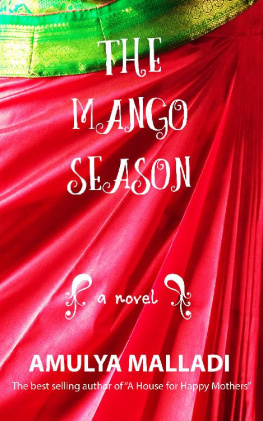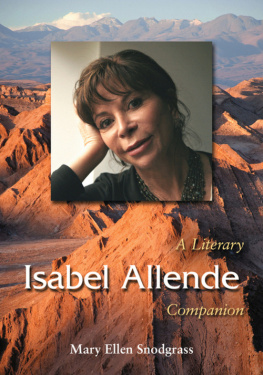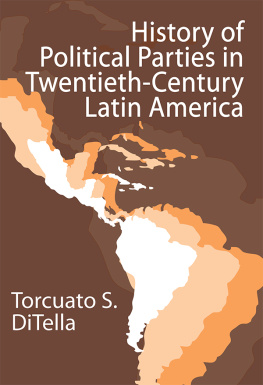Table of Contents
Also by Amulya Malladi
Serving Crazy with Curry
The Mango Season
A Breath of Fresh Air
For Isaiah and Tobias
ACKNOWLEDGMENTS AND AUTHORS NOTE
The first time I thought about writing this story I was fifteen years old and not skilled enough to write it or old enough to imagine its broad scope. It has taken me a decade and a half to finally write this story and I needed the help of many, many people to get here.
Thanks are due to:
My husband, Sren, who read all the drafts, listened to all the versions, plots, and subplots, and never let me give up, even during the darkest of times, which there were plenty of.
My mother, Lakshmi Malladi, who told me the stories that inspired this one; without her this book would never have been written.
My editor at Ballantine Books, Allison Dickens, who gave my book (and me) a chance and loved it as much as I do; without her faith in me I would be completely lost. I owe her more than I will ever be able to repay.
My agent and strongest supporter, Matt Bialer, who stood by me through some difficult decisions; I write better because of how well he does his job.
Special thanks to Arjun Karavadi for support via telephone; to Stanley Hainsworth and Jody Pryor for support via e-mail; and to my sons, Tobias and Isaiah, for support via laughterI wouldnt have remained sane without them.
I would like to add that even though this story presents several historical facts about India, it is still just a story and mostly a product of my imagination. I have made an attempt not to distort the facts, but this book is not a documentary about India, her history, or an average ashram. This story is my perception of how things were for the set of people I created and wrote about.
Amulya Malladi
January 1, 2005
196164
17 December 1961. Provocative action against Indian nationals in the vicinity of Anjadip Island and Portugals belligerent attitude toward the problems of its colonial possessions in India resulted in the government of Indias decision to liberate Goa, Daman, and Diu. Operations were launched at night and the Portuguese were driven out of India.
3 May 1962. Hundreds of Muslims were killed in clashes with Hindus in West Bengal.
TellaMeda,theHousewiththeWhiteRoof
They took strips of coconut leaves and made dolls with them. The supple leaves could be twisted and turned without breaking. They would use red tilakam to make the eyes, nose, and mouth of the dolls. A small swatch of white cloth would sometimes become a sari or a shirt. Then the dolls would be forgotten, left to dry in the sun when the call for lunch or dinner came from downstairs.
Kokilas earliest memories of living in Tella Meda, the house with the white roof, were of making those dolls with Vidura and Chetana. Closest in age to her, they were her best friends in the ashram, and together they got into a lot of mischief. They tied leftover crackers from deepavali to the tail of the cat, Brahma; they tortured those who sat in meditation by making noises and faces; and they ran around the courtyard, squealing and screeching in the afternoon after lunch, while everyone was trying to take a nap.
Those were the happy times, Kokila would think later on when she looked back. Those were, alas, only happy memories.
Kokila came to Tella Meda an orphan, a month after her marriage. She had just turned eleven.
In those days girls were married before they reached puberty, but they couldnt go to their husbands home until after they menstruated. For Kokila the three years before she menstruated were spent at Tella Meda, the home of her late fathers friend Ramanandam Sastri.
Built right by the Bay of Bengal in the small coastal town of Bheemunipatnam in southern India, the house with the white roof was not a conventional home. Tella Meda was a home for the weary, a safe harbor for lost souls, the last refuge for some and the only home for others.
Tella Meda was an ashram, a religious dwelling where a guru led her folk to the right path through prayer and the reading of scripture. But it was not a conventional ashram. The guru, Charvi, refused to be called guru or Amma, as the norm was for those as enlightened as she. Charvi went by just Charvi and would not call her home an ashram but just a home, hers, which she willingly and openly shared with those who were in need.
Tella Meda was a beautiful house, the most beautiful house Kokila had ever seen and definitely the most beautiful house she would ever live in. On a full moon night the house glittered as if diamonds were studded all over it and its outer walls shimmered from the reflection of the waters of the Bay of Bengal.
The foundation of the house was first laid in 1947 but every time construction began the hurricane season arrived with a vengeance, destroying whatever had been built. Finally in 1955 a man named Srikant Somayajula succeeded in building a house on that foundation. It was a house unrivaled in Bheemunipatnam for its size and opulence.
As soon as Kokila walked past the gate with Ramanandam Sastri and stepped into the big front yard and garden of Tella Meda she was struck with awe. A large verandah covered with stone tiles was sprawled in front, separated from the garden by an ornate knee-high cement balcony. Big decorative flowers molded out of cement and sand adorned the short white balcony. Opening into the verandah were doors from four rooms, one left of the main entrance and three on the right.
The left door led into Charvis room and the three on the right led into guest rooms, which housed the devotees of Charvi. Many came to Tella Meda to give their respects to Charvi and to find some peace and quiet in the house with the white roof by the Bay of Bengal.
This is the puja room, Ramanandam Sastri told her as he led her into Tella Meda through the main entrance, and the music room.
A beautiful mahogany temple was the platform for a large golden Venkateshwara Swami and his consort, Lakshmi. Several other idols of gods and goddessesGanesha, the god of obstacles; Saraswati, the goddess of educationand a large marble Shivaling were arranged on mahogany platforms within the temple.
The temple had obviously been cared for; everything was polished and shone. Fresh flowers from the front gardenred and white roses, red hibiscus, and small white jasmineslay at the feet of the gods and goddesses and the smell of sandalwood incense pervaded the room.
Between the temple area and the music area a bright yellow and red coconut straw mat was laid down as a divider. It spanned from the front door to the door into the interior of the house. The music area of the room was covered with a brown cotton rug; a veena, a pair of tablas, a tanpoora, a harmonium, and small and large cymbals lay on the rug, leaning against each other.
Kokila wondered who kept the large house clean. Ramanandam Sastri had warned her that she would have some chores, as did everyone else who lived in the ashram. Kokila hoped her task would not be to clean the house because the size of it was intimidating.
Past the temple room, Kokila stepped into another verandah and gawked as she saw how big the house really was. Coming from a small house that was more hut than real house, she felt as if she were stepping into a palace.
Next page








